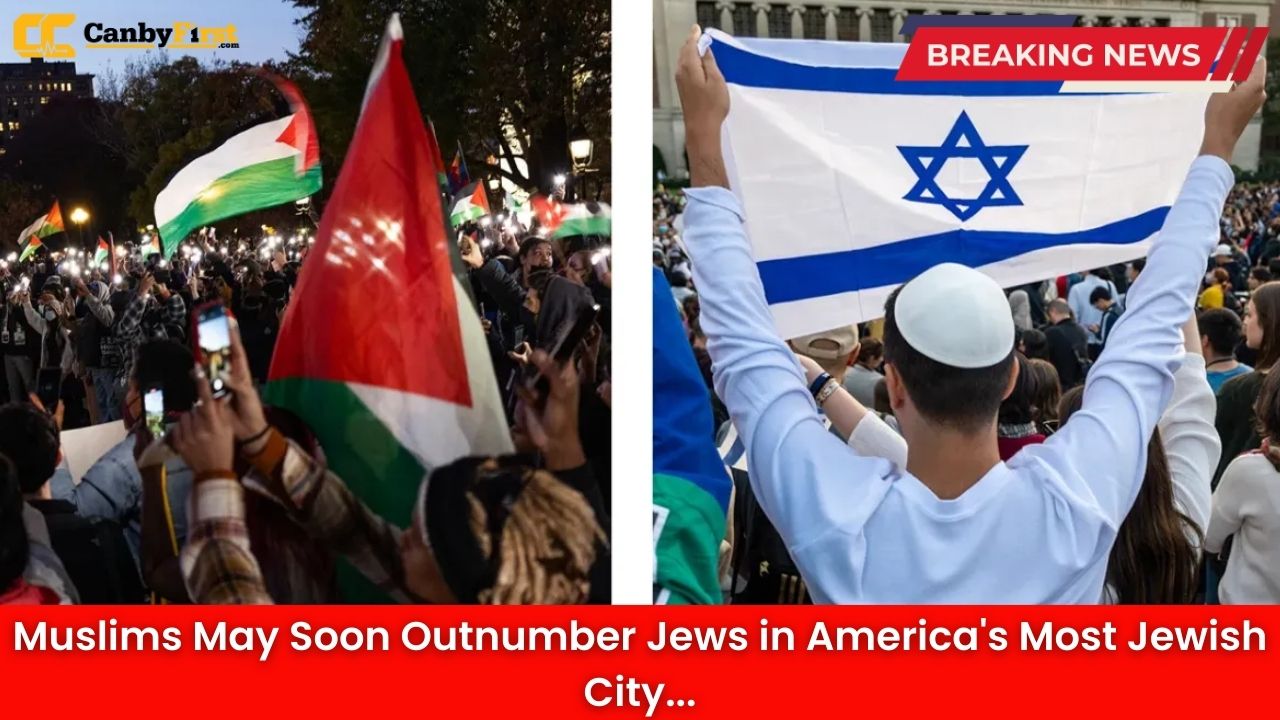New York, US: In a demographic shift that could reshape the political and cultural landscape of America’s most Jewish city, New York City may now have more Muslims than Jews for the first time in its modern history.
A Historic Demographic Transformation
Recent data analysis suggests that Muslims in New York City have reached approximately 750,000 to 800,000 residents, while the Jewish population stands at around 960,000 across the broader metropolitan area but closer to 750,000 within the five boroughs proper. This represents a remarkable convergence of two historically significant religious communities in a city that has served as a gateway for immigrants for over a century.
The Islamic population in New York City has experienced dramatic growth over the past two decades, increasing from an estimated 600,000 in the early 2000s to nearly 800,000 today. This growth has been fueled by continued immigration from Muslim-majority countries, higher birth rates within Muslim communities, and religious conversion. The Muslim community now represents approximately 9 percent of the city’s total population, making New York home to the largest urban Muslim population in the United States.
Also Read
Jewish Community Numbers Tell Complex Story
While New York City still maintains the largest Jewish population of any city worldwide, recent surveys reveal a more nuanced picture. The 2024 UJA-Federation study found 960,000 Jews in the eight-county New York area, but this includes suburban counties like Nassau, Suffolk, and Westchester. Within the five boroughs alone, the number drops to approximately 750,000 to 800,000 Jewish residents.
Brooklyn remains the epicenter of Jewish life in the city, housing nearly half of all Jewish New Yorkers with an estimated 462,000 residents. Manhattan follows with about 200,000 Jewish residents, while Queens, the Bronx, and Staten Island have significantly smaller Jewish populations.
Political Implications Already Visible
The demographic shift has already begun influencing New York City politics. The recent Democratic mayoral primary victory of Zohran Mamdani, a 33-year-old democratic socialist who has been critical of Israeli policies, demonstrated the growing political influence of Muslim voters. Mamdani’s campaign successfully mobilized Muslim communities across the city, particularly in Queens and Brooklyn neighborhoods with substantial Muslim populations.
His victory over former Governor Andrew Cuomo in the Democratic primary sent shockwaves through traditional Jewish political networks, who had long considered New York City a reliably pro-Israel constituency. The outcome suggests that Muslim voters, combined with younger progressive Jews critical of Israeli policies, may represent a formidable political coalition.
Geographic Distribution Patterns
The Muslim population in New York City is remarkably diverse geographically and ethnically. Queens County leads with the highest concentration of Muslim residents at approximately 5 percent of the borough’s population, followed by Brooklyn at 4 percent. The Bronx and Manhattan each house about 3 percent Muslim populations.
The largest Muslim communities include South Asians, African Americans, West Africans, North Africans, Caribbean immigrants, and West Asians. This diversity contrasts with the Jewish population, which is predominantly Ashkenazi at 75 percent, with 10 percent identifying as Sephardic or Mizrahi.
Economic and Social Integration
Muslim New Yorkers have established significant economic footholds across the city. In the healthcare sector alone, Muslims comprise nearly 10 percent of all doctors, over 12 percent of pharmacists, and substantial percentages of other medical professionals. These healthcare workers provide more than 6 million patient appointments annually and contribute over 4 billion dollars in local wages and benefits.
The community has also established 275 mosques across the metropolitan area, more than any other region in the country. Recent policy changes by Mayor Eric Adams have allowed mosques to broadcast the call to prayer on Fridays and during Ramadan, reflecting the growing accommodation of Muslim religious practices.
Challenges and Opportunities
Both communities face distinct challenges in contemporary New York. The Jewish community reports increasing concerns about antisemitism, with 73 percent of Jewish adults believing antisemitic incidents are rising in the New York area. Meanwhile, the Muslim community has faced its own struggles with discrimination and islamophobia, particularly highlighted during Mamdani’s mayoral campaign.
Economic disparities exist within both populations. Among Jewish households, 20 percent are classified as poor or near-poor, with poverty concentrated heavily in Haredi Orthodox and Russian-speaking communities. The Muslim community, being younger on average with a median age of 33 compared to the general population’s 47, faces different economic challenges related to establishing careers and homeownership in an expensive city.
Looking Forward
The demographic convergence represents a broader transformation in American urban centers, where traditional religious and ethnic hierarchies are shifting due to immigration patterns and generational changes. Similar trends are visible in other major cities, though New York’s scale makes it particularly significant.
The implications extend beyond mere numbers. New York City has historically served as a testing ground for national political trends, and the growing influence of Muslim voters could signal broader changes in American politics. The city’s experience managing religious diversity may provide lessons for other metropolitan areas experiencing similar demographic transitions.
For Jewish community leaders, the changing demographics present both challenges and opportunities for coalition building. Some have expressed concerns about maintaining political influence, while others see potential for interfaith cooperation on shared urban issues like housing, education, and public safety.
The Muslim community, meanwhile, continues to integrate into the city’s political and cultural fabric while maintaining distinct religious and cultural identities. The success of Muslim political candidates like Mamdani suggests that this integration is accelerating, potentially reshaping how religious minorities participate in American urban governance.
As New York City navigates this demographic transition, the outcome will likely influence how similar changes unfold in other American cities facing comparable religious and ethnic diversification. The city’s ability to maintain social cohesion while accommodating shifting demographics may determine whether this transformation strengthens or challenges its historic role as America’s most successful example of religious pluralism.












